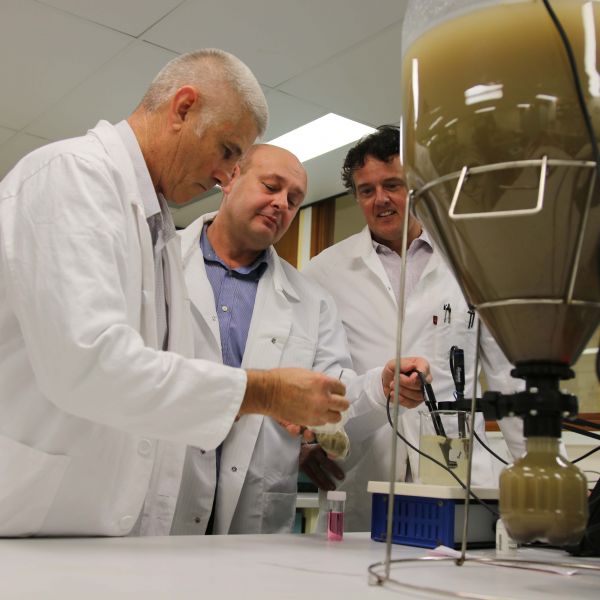Alligator Weed (Alternanthera philoxeroides) was used for removal of lead and mercury from polluted waters. It is possible to use these species to restore the biosolid and sewage sludge contaminated sites, while exercising caution on human consumption. |
| Phytoremediation with Alligator Weed to remove Lead and Mercury from water. |
Alternanthera philoxeroides, commonly referred to as alligator weed, is a native species to the temperate regions of South America, which includes Argentina, Brazil, Paraguay and Uruguay. Argentina alone, hosts around 27 species that fall within the range of the genus Alternanthera. Wikipedia
Article Science paper: Metal hyperaccumulation in plants - Biodiversity prospecting for phytoremediation technologys source Edible plants and vegetables crops plants and vegetables crops
The dominant leaf vegetable producing species viz. Amaranthus spinosus, Alternanthera philoxeroides and A. sessiles growing on the sewage sludge of Musi river located in greater Hyderabad City (close to 17º26' N latitude and 78º27' E longitude), Andhra Pradesh, India was investigated for metal accumulation.
- The transfer factor for metals was calculated Metal content in plant part (dry wt.)/ Metal content in soil (dry.wt).
- Transfer factor and metal content Cd (non-essential), Zn and Fe (essential) in plant parts of these selected species indicate their aility to bioconcentrate in their tissues (Figure 12).
- The concentration of these metals is invariably high in leaf tissue (Bañuelos and Meek, 1989; Prasad, 2001b).
- Thus, it is possible to use these species to restore the biosolid and sewage sludge contaminated sites, while exercising caution on human consumption.
It is also possible to supplement the dietary requirement of human food with Zn and Fe as these being essential nutrients and the plant species are edible.
[Warning] However, there is a need to monitor the metal transfer factor through food chain (Bañuelos and Meek, 1989; Bañuelos et al. 1993a; Bañuelos et al. 1993b).
Alligator Weed description courtesy of Wikipedia- Alternanthera philoxeroides can thrive in both dry and aquatic environments and is characterized by whitish, papery flowers along its short stalks, irregular, or sprawling hollow stems, and simple and opposite leave pattern sprouting from its nodes. The species is dioecious. It is also considered a herbaceous plant due to its short-lived shoot system. It produces horizontal stems, otherwise known as stolons, that can sprout up to 10 m in length and thanks to its hollow stems, floats easily. This results in large clusters of stem to amass and create dense mats along the surface. The plant flowers from December to April and usually grows around 13 mm in diameter and tend to be papery and ball-shaped. The weed's intricate root system can either allow them to hang free in the water to absorb nutrients or directly penetrate the soil/sediment and pull their nutrients from below.









































